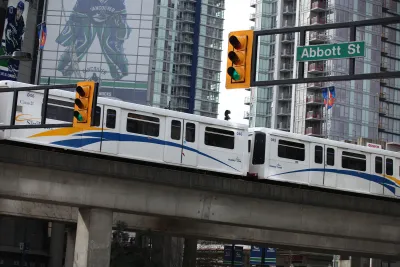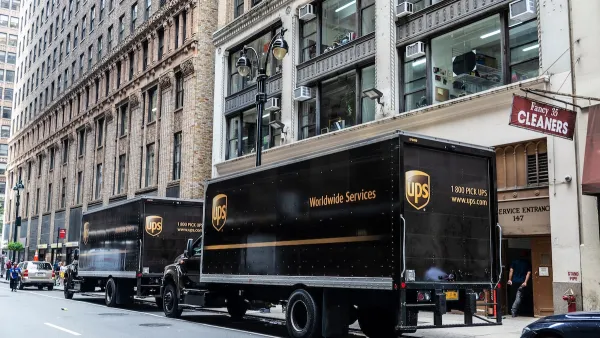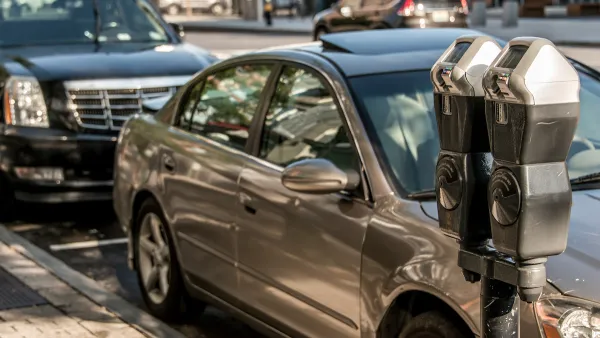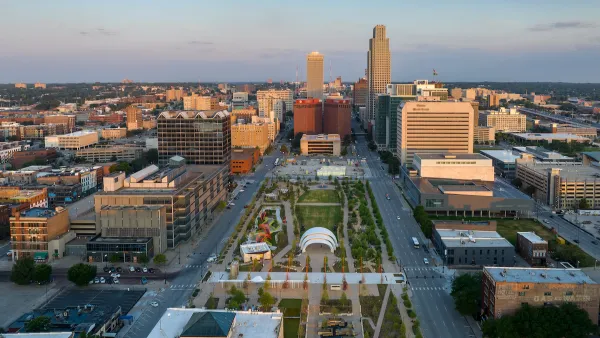Questions about the variables that could significantly alter the future of transportation, and the configuration of the public realm to accommodate those futuristic forms of transportation, illustrate the potential power of scenario planning.

Anthony Flint asks the question: In a time when "new forms of transportation are creating many unknowns," are contemporary streetscape designs fully anticipating the future?
After presenting the example of a development at a prominent corner of Kenmore Square in Boston—a hotel development that "hinges on a complete re-routing of traffic to favor bicyclists and pedestrians, adding big swaths of public space in the process—Flint goes on to pose the significant unknowns challenging all current transportation thinking.
For example, the imminent arrival of autonomous cars may allow narrower streets because driverless cars can essentially tailgate each other. Timed traffic signals, guided by artificial intelligence, will keep things flowing in ways far superior to the red light, green light system of today. Downtowns everywhere won’t have to devote prized urban land for big parking garages or surface lots.
But shared autonomous vehicles may also end up exacerbating Boston’s first-in-the-nation congestion problems. One study predicts that driverless Ubers and Lyfts will be in such continual use, circling the block looking for rides, key streets in major metropolitan areas will see more gridlock than ever before.
Additional technologically advanced mobility mechanisms will also operate in the public realm of the future, like electric scooters and delivery robots. Both are already are already operating in some corners of the United States.
As a tool to anticipate these challenges, Flint suggests scenario planning, described here as allowing planners "to map out multiple scenarios, leaving room for unknowns."
"When conditions on the ground indicate that one of the scenarios is more likely, that’s the trigger for going all-in on infrastructure, policies, and placemaking," according to Flint.
FULL STORY: We’re redesigning our streetscape — but what if we’re getting it all wrong?

Analysis: Cybertruck Fatality Rate Far Exceeds That of Ford Pinto
The Tesla Cybertruck was recalled seven times last year.

National Parks Layoffs Will Cause Communities to Lose Billions
Thousands of essential park workers were laid off this week, just before the busy spring break season.

Retro-silient?: America’s First “Eco-burb,” The Woodlands Turns 50
A master-planned community north of Houston offers lessons on green infrastructure and resilient design, but falls short of its founder’s lofty affordability and walkability goals.

Test News Post 1
This is a summary

Analysis: Cybertruck Fatality Rate Far Exceeds That of Ford Pinto
The Tesla Cybertruck was recalled seven times last year.

Test News Headline 46
Test for the image on the front page.
Urban Design for Planners 1: Software Tools
This six-course series explores essential urban design concepts using open source software and equips planners with the tools they need to participate fully in the urban design process.
Planning for Universal Design
Learn the tools for implementing Universal Design in planning regulations.
EMC Planning Group, Inc.
Planetizen
Planetizen
Mpact (formerly Rail~Volution)
Great Falls Development Authority, Inc.
HUDs Office of Policy Development and Research
NYU Wagner Graduate School of Public Service




























